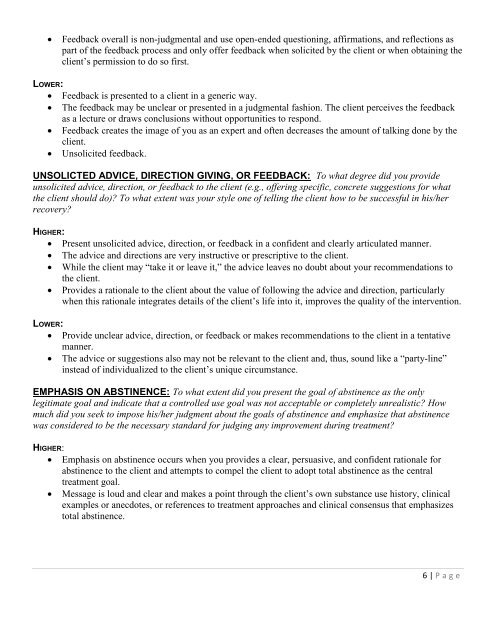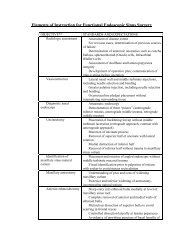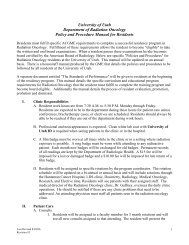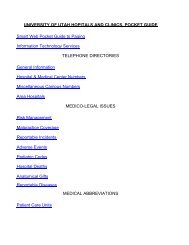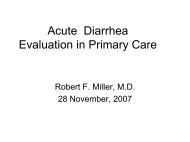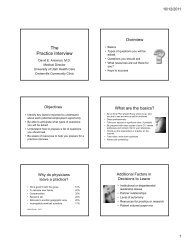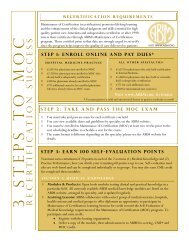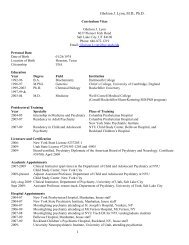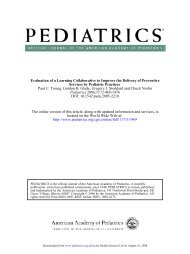Motivational Interviewing Ratings: Higher and Lower Skill Levels
Motivational Interviewing Ratings: Higher and Lower Skill Levels
Motivational Interviewing Ratings: Higher and Lower Skill Levels
You also want an ePaper? Increase the reach of your titles
YUMPU automatically turns print PDFs into web optimized ePapers that Google loves.
Feedback overall is non-judgmental <strong>and</strong> use open-ended questioning, affirmations, <strong>and</strong> reflections as<br />
part of the feedback process <strong>and</strong> only offer feedback when solicited by the client or when obtaining the<br />
client’s permission to do so first.<br />
LOWER:<br />
Feedback is presented to a client in a generic way.<br />
The feedback may be unclear or presented in a judgmental fashion. The client perceives the feedback<br />
as a lecture or draws conclusions without opportunities to respond.<br />
Feedback creates the image of you as an expert <strong>and</strong> often decreases the amount of talking done by the<br />
client.<br />
Unsolicited feedback.<br />
UNSOLICTED ADVICE, DIRECTION GIVING, OR FEEDBACK: To what degree did you provide<br />
unsolicited advice, direction, or feedback to the client (e.g., offering specific, concrete suggestions for what<br />
the client should do)? To what extent was your style one of telling the client how to be successful in his/her<br />
recovery?<br />
HIGHER:<br />
Present unsolicited advice, direction, or feedback in a confident <strong>and</strong> clearly articulated manner.<br />
The advice <strong>and</strong> directions are very instructive or prescriptive to the client.<br />
While the client may “take it or leave it,” the advice leaves no doubt about your recommendations to<br />
the client.<br />
Provides a rationale to the client about the value of following the advice <strong>and</strong> direction, particularly<br />
when this rationale integrates details of the client’s life into it, improves the quality of the intervention.<br />
LOWER:<br />
Provide unclear advice, direction, or feedback or makes recommendations to the client in a tentative<br />
manner.<br />
The advice or suggestions also may not be relevant to the client <strong>and</strong>, thus, sound like a “party-line”<br />
instead of individualized to the client’s unique circumstance.<br />
EMPHASIS ON ABSTINENCE: To what extent did you present the goal of abstinence as the only<br />
legitimate goal <strong>and</strong> indicate that a controlled use goal was not acceptable or completely unrealistic? How<br />
much did you seek to impose his/her judgment about the goals of abstinence <strong>and</strong> emphasize that abstinence<br />
was considered to be the necessary st<strong>and</strong>ard for judging any improvement during treatment?<br />
HIGHER:<br />
Emphasis on abstinence occurs when you provides a clear, persuasive, <strong>and</strong> confident rationale for<br />
abstinence to the client <strong>and</strong> attempts to compel the client to adopt total abstinence as the central<br />
treatment goal.<br />
Message is loud <strong>and</strong> clear <strong>and</strong> makes a point through the client’s own substance use history, clinical<br />
examples or anecdotes, or references to treatment approaches <strong>and</strong> clinical consensus that emphasizes<br />
total abstinence.<br />
6 | P a g e


